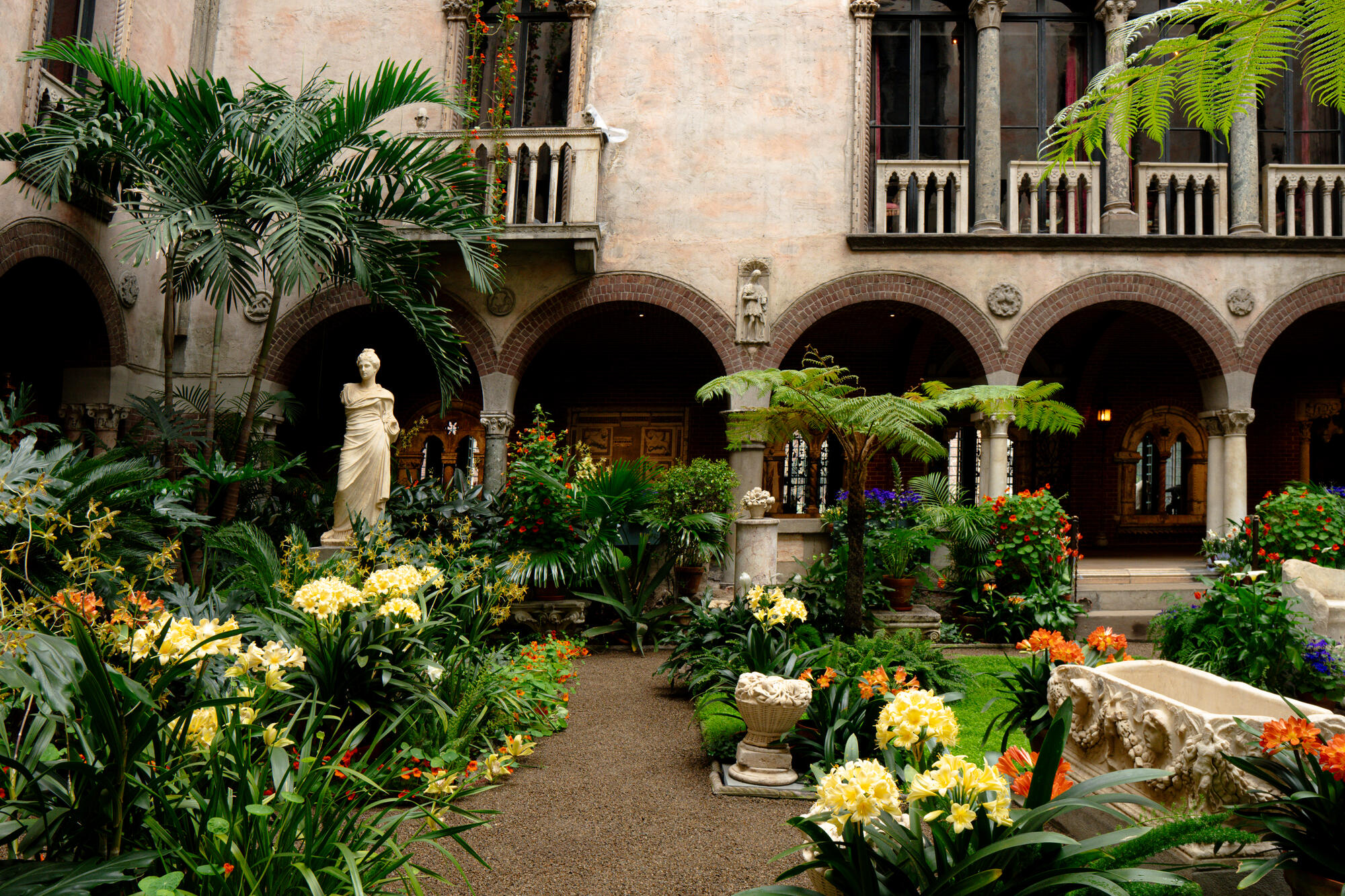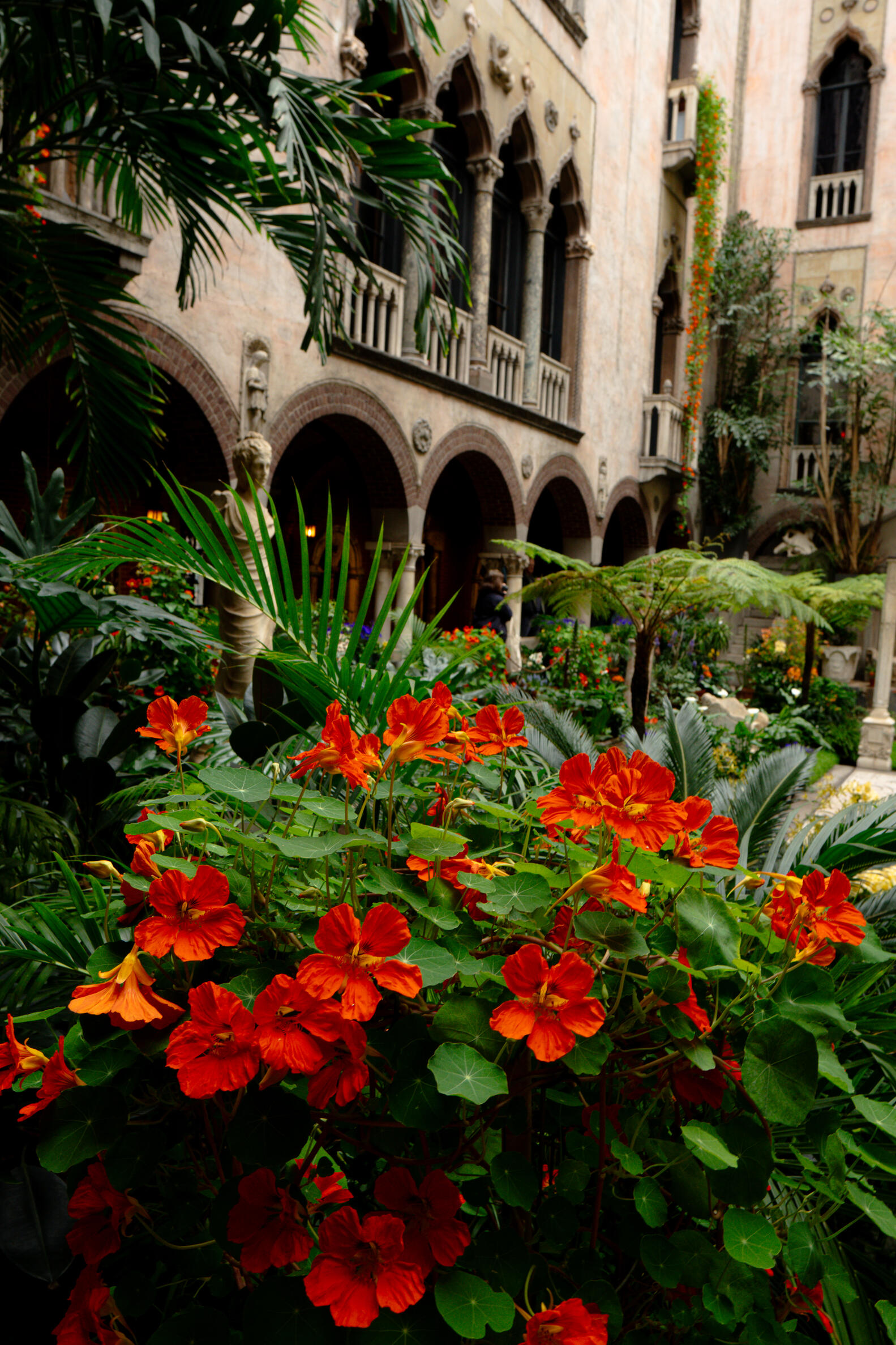[ERIKA RUMBLEY] Hi, I’m Erika Rumbley, the Director of Horticulture here at the Gardner. I’m so glad that you’re here to see our hanging nasturtiums. It’s a courtyard installation we present every year for about three weeks to celebrate Isabella’s birthday in April.
Nasturtiums come in many colors – but orange was the color that Isabella herself grew. She was not only an art collector, but a plant lover and a grower.
We raise these nasturtium vines from seedlings in our large greenhouses outside of Boston. To prepare for this glorious display, we tend the delicate plants for about a year. We grow them up the greenhouse walls and across the ceiling.
The process of bringing them here and hanging them is quite a spectacle. So on the day of transport from the greenhouse, we usually have about five people along the length of each plant, carrying them into the truck – like a super long bridal train. They’re carried out of the truck the same way, then through the museum, and up the stairs. And the thing that most surprised me the first time I helped install them is, holding each plant in the balcony as it’s lowered, each one weighs about 50 pounds. I love the fact that even though we nurture and shape these plants in a really hands-on way, they look so natural flowing down the walls.
And this courtyard installation is just one of about ten different ones we do every year.
The tall tree ferns around the four corners of the mosaic are some of the few elements that are here all year round. Nearly every other plant changes with every installation. There are always key ‘characters’: plants that have a line back to ones that Isabella loved. These include ferns and palms, azaleas, chrysanthemums, and, of course, orchids.
Move around to find a good viewing spot for you. I have a few favorite spots of my own. One is facing the fountain head-on. You can see the fountain along the wall of the courtyard best by moving around the courtyard to the area between the two columns that have lions at the bottom. On the right and left sides of the fountain, you’ll see this stark symmetry of color and texture – and scale – all framed by the height of the space. Another favorite view is from any corner of the courtyard. That’s where you’ll find plants that break that symmetry – maybe a one-off orchid that just opened that morning. And from the upper floors you’ll be able to see the star-shaped forms of the tree ferns and the overall geometry of the plant placements.
When we’re caring for the living collection, we think about not just the health of the plants, but about everyone! So we use only organic methods, and that includes weekly releases of a mite that eats other mites.
Horticulturists work in this space every single morning, 365 days a year. As we leave, we sweep the gravel paths so that there are no footprints. So we want you to feel like the courtyard is this impossible, exuberant garden that has risen up out the center of the space, magically untouched. Every time you come, the courtyard – and you – will be different. Open yourself to each experience.





